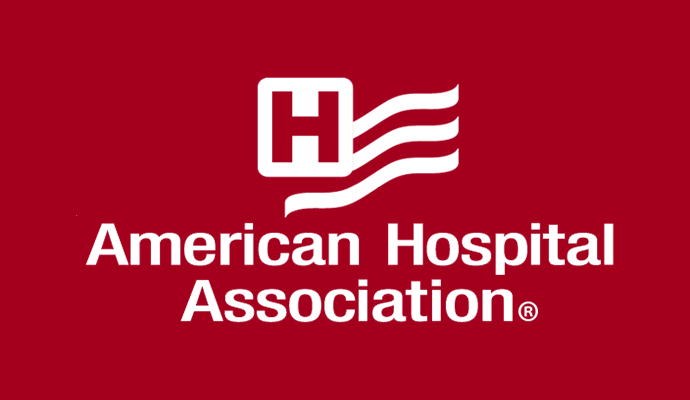AHA: Good Faith Estimates Create Administrative Burden for Hospitals
AHA urged CMS to adjust the patient-provider dispute resolution process and align price transparency policies to relieve the administrative burden resulting from the good faith estimates regulation.

Source: AHA Logo
- The American Hospital Association (AHA) has asked CMS to adjust the good faith estimates policy under the No Surprises Act, citing the accompanying administrative burden and operational inefficiencies as problems for hospitals and health systems.
In a letter to Kathleen Cantwell, director of the CMS Office of Strategic Operations and Regulatory Affairs, AHA expressed its support for policies that help patients plan for potential healthcare costs, like the good faith estimates regulation. However, the organization stressed that CMS must consider the impact these policies have on health systems as well.
The letter stated that the government has underestimated the burden associated with the good faith estimates regulation.
The good faith estimates policy, which went into effect on January 1, 2022, requires providers to give uninsured and self-pay patients an estimate of expected charges for a service upon scheduling a visit.
Hospitals and health systems had to update their systems and train staff on the new process to comply with the regulation. While many hospitals offered pre-care estimates to uninsured and self-pay patients before the No Surprises Act, facilities had to shift workflows and make operational changes to comply with the new timeline and format requirements, the letter said.
AHA confirmed that hospitals generally meet the good faith estimate requirements but face significant ongoing burden. According to the letter, the estimates take 10 to 15 minutes each to produce and some hospitals barely meet the demand. While automated systems may help relieve some of the burden, AHA said full automation is difficult to achieve due to the individualized nature of the estimates.
The good faith estimates requirements have primarily fallen to administrative staff responsible for other revenue cycle duties, including check-in and pre-registration processes. The new price estimate responsibilities have led to a delay in other front-end tasks, the letter said.
AHA has specifically asked CMS to change the co-provider estimate process, patient-provider dispute resolution process, and price transparency policy alignment to help relieve the good faith estimates policy burden.
Co-providers and co-facilities do not have to comply with the good faith estimates policy until January 1, 2023. But AHA expressed concern for the lack of automated solutions that allow co-providers to initiate this process. According to the letter, billing systems must request and transmit billing rates and other information between providers to fulfill co-provider cost estimates, which typical practice management systems cannot do.
“We urge HHS to refrain from enforcing the comprehensive good faith estimate requirement until after a technical solution for exchanging this information is developed and implemented across all providers,” AHA wrote.
The patient-provider dispute regulation states that when a patient’s bill is at least $400 higher than the provider’s good faith estimate, the patient can initiate a patient-provider resolution process.
AHA agreed that it is essential to ensure patients do not receive unexpectedly high medical bills but stated that the $400 threshold is not practical and may lead to high volumes of disputes for medically necessary changes.
“Without insurance, slight changes in medically necessary care can increase the overall cost, leaving even the most diligent patients and transparent providers with unexpected changes in the cost of care,” the letter stated. “Slight changes during complex medical treatments would frequently trigger a $400 cost increase, which could lead to an excessive number of disputes going before the select dispute entities.”
Consequently, providers would face more administrative burden to handle the dispute resolutions.
AHA urged CMS and HHS to adjust the policy and require final medical bills to be at least 10 percent higher than the good faith estimate to be eligible for a patient-provider dispute resolution process.
In addition to the good faith estimates policy, hospitals and health systems must also comply with the hospital price transparency rule. However, these two policies require different workflows and are operationally distinct, which increases the workload for administrative staff.
AHA asked CMS to remove duplication within the policies and align the federal price transparency requirements.
